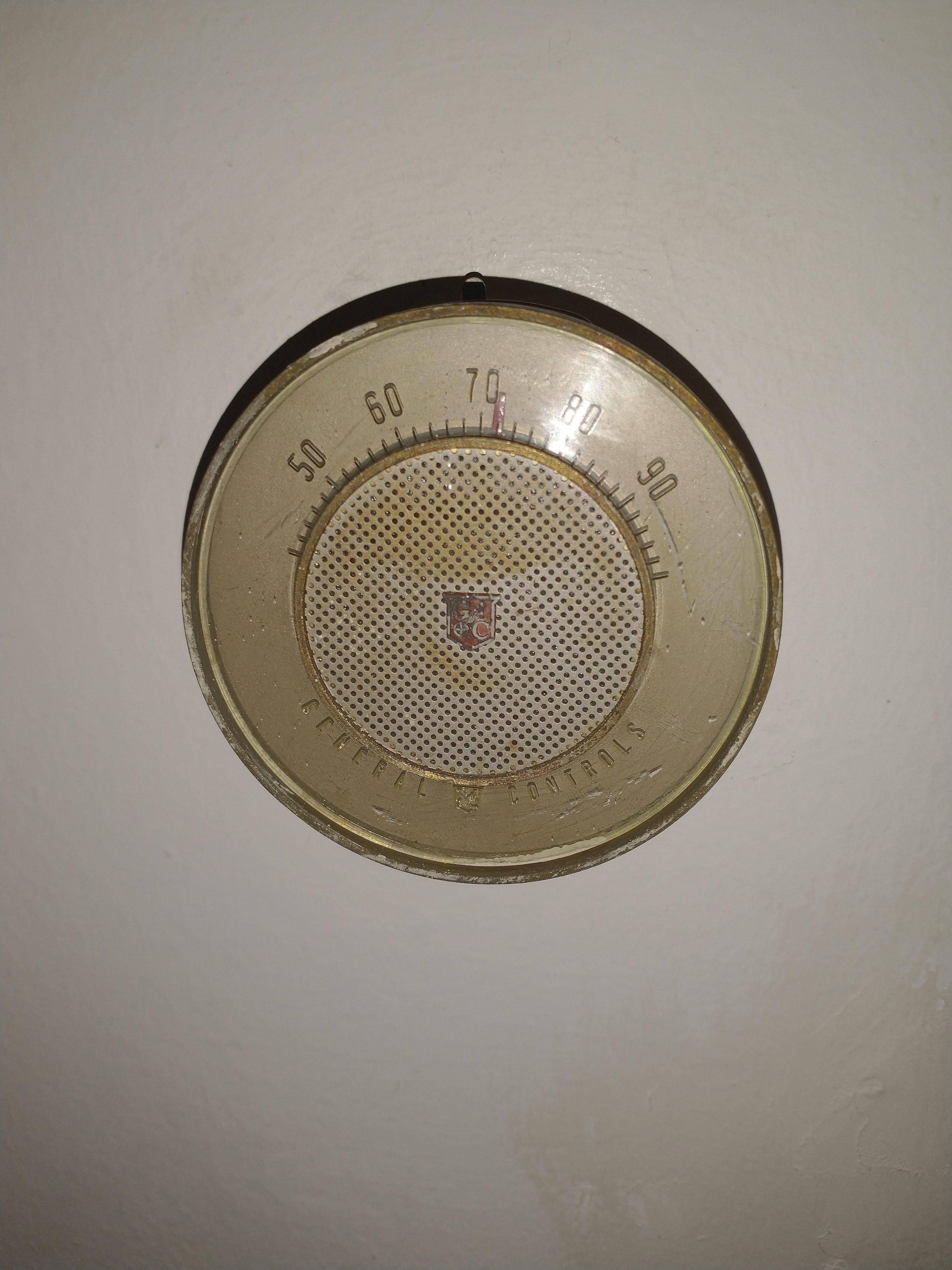In almost all two-wire thermostat systems, the polarity of the wires does not matter — the thermostat just closes a switch across those wires to activate the furnace, and it doesn't care what the voltage is. The fact that the wires are both green just means that's the cable the installer had around and it wasn't trying to be color coded. (I have a similar system, and mine are both black.)
What you do want to know is what voltage your system uses. I'm guessing from the look of things that it may be a “millivolt” system, which generates a small DC voltage from a thermopile heated by the pilot light. (The component with wires attached to it is the gas valve; two wires go to the thermopile and two go off to the thermostat.)
If that's the case, then you must choose a programmable thermostat that can be fully battery-powered (there isn't enough power for the thermostat as well as the gas valve), or have a separate power supply connection, and listed as compatible with millivolt systems. I expect that the Honeywell unit you mentioned is, but check the installation instructions.
The other common power option is 24 volts AC on the thermostat wires, derived from a transformer hooked up to line voltage — this can be used to power a smart thermostat permanently. Direct line-voltage thermostats also exist but are usually used for electric heating.
You can use a multimeter to confirm what type you have:
- Make sure the thermostat is off (or removed from the wall).
- Set the meter to the DC voltage mode and put the probes on the two wires from the wall.
- If it gives a stable reading of under a volt but not zero, then you have a "millivolt" system.
- If it reads close to zero, continue.
- Set the meter to the AC voltage mode and take another reading.
- If it reads 24 V then you have a 24 V AC system — you can use any smart thermostat!
- If it reads 120 or 240 V (this is very unlikely for this type of equipment), then you need a line voltage thermostat, or an add-on line voltage relay for your 24V thermostat.
- If none of the previous cases apply, then you measured it wrong, there's a wiring fault, or the system's really weird.
Once you have a suitable thermostat (assuming it's not a line-voltage system), you would connect your two wires (in either orientation) to the “R” (or "Rh") and “W” terminals of your thermostat — those are the two terminals which the thermostat closes a circuit between to “call for heat”.
(Nothing else matters — your thermostat may have a “fan on” switch but it will do nothing since it's not wired to anything, just like a cooling mode will also not do anything since you're not wiring it to air conditioning. Read the thermostat's installation instructions to find out how to program it not to expect any missing features — and also other things you may like to adjust such as how frequently it cycles on and off to maintain temperature.)



